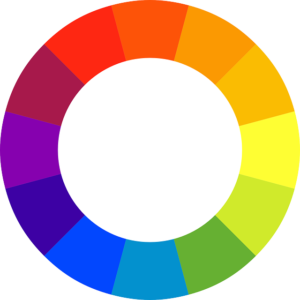Thoughts and Updates
Colour and its Effects on Us
The colours we see are actually light waves, all physical matter absorbs and reflects light to some degree. Objects take on the colour of the part of light they reflect, but do not appear to take on the colours they absorb. This is characterised by pigmentation. For example haemoglobin is the pigment that colours our blood red or anthocyanin which brings different shades of red to tomatoes, grapes and beetroot.
Blue for instance, vibrates at a relatively high frequency, while red vibrates much slowly; red light is actually denser than blue. Violet has the shortest wavelength and highest frequency of all the colours. Light travels through space in straight lines, but it has been well known for many centuries that sunlight when passed through a glass prism the different colours are bent to different degrees producing a spectrum of separate rays – a rainbow.
We see colour when the reflected light waves enter our eyes, activating the rod and cone cells on the retina at the back of the eye. These light signals are transmitted via the  optical nerve to the visual centre at the back of the brain. Colour entering the optical system has a direct influence on the hypothalamus. The hypothalamus acts as a communications centre for the pituitary gland, sending messages to the pituitary gland in the form of hormones. It also regulates mood, sleep and temperature. The pituitary gland is often known as the master gland, it is situated in a bony hollow, just behind the bridge of the nose. It controls the most of our hormone system, consequently the colour perceived has an effect on our hormonal system. Thus the colour we perceive can have a direct effect on our wellbeing.
optical nerve to the visual centre at the back of the brain. Colour entering the optical system has a direct influence on the hypothalamus. The hypothalamus acts as a communications centre for the pituitary gland, sending messages to the pituitary gland in the form of hormones. It also regulates mood, sleep and temperature. The pituitary gland is often known as the master gland, it is situated in a bony hollow, just behind the bridge of the nose. It controls the most of our hormone system, consequently the colour perceived has an effect on our hormonal system. Thus the colour we perceive can have a direct effect on our wellbeing.
Red stimulates tension and excitement, while blue can ease anxiety and deepen our sense of relaxation. Orange stimulates our appetite while blue can decrease our desire for food – this could be useful for those who want to lose weight. In 1979 Alexander Schauss, developed a shade of pink, known as the Baker-Miller Pink (#FF91AF) which has been widely used in prison holding cells and is said to have dramatically reduced stress and violent behaviour among inmates. This shade of pink reminds me of Barbie and is something that my 8 year old niece would love.
The effect of light has long been known to have a dramatic effect on our wellbeing. A disrupted supply of natural light can alter our brain chemistry leading to interrupted sleep, jet lag, depression and seasonal affective disorder (SAD). Sunlight is also the best source of vitamin D a nutrient needed to keep bones, teeth and muscles healthy. The wave length of blue light has also been also been found to destroy Methicillin-Resistant Staphylococcus aureus (MRSA). While hospitals commonly expose babies with excessive bilirubin to blue light for periods of to reduce the levels of bilirubin, prior to this infants would have had to undergone a complete blood transfusion. Red light can be an effective way of improving poor circulation, stiff joints and inflammatory rheumatism and arthritis. It has also been found to be effective relief to migraines. Ultraviolet light can benefit skin conditions e.g. acne and psoriasis.
I find it interesting that colour is used in both complimentary and scientific medicine. Regardless of your preference, it is clear that complimentary therapies are having an increased influence or traditional medical practices.
Discussion
Comments disabled.